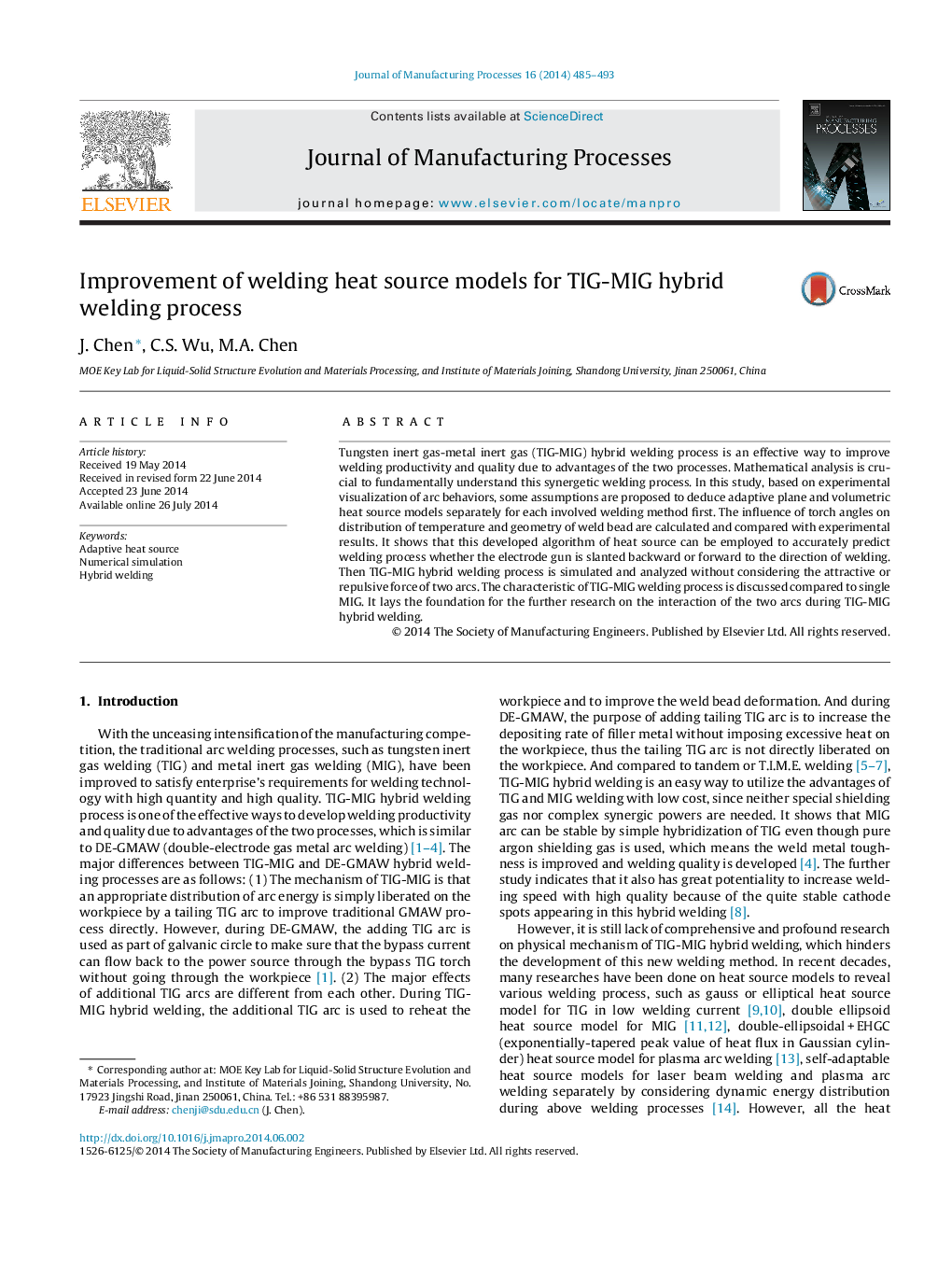| Article ID | Journal | Published Year | Pages | File Type |
|---|---|---|---|---|
| 1696981 | Journal of Manufacturing Processes | 2014 | 9 Pages |
•Adaptive heat source models are improved for different welding processes.•The heat energy deposited in the front of weld pool increases with decreasing θ.•TIG-MIG hybrid welding process is calculated and compared with single MIG.
Tungsten inert gas-metal inert gas (TIG-MIG) hybrid welding process is an effective way to improve welding productivity and quality due to advantages of the two processes. Mathematical analysis is crucial to fundamentally understand this synergetic welding process. In this study, based on experimental visualization of arc behaviors, some assumptions are proposed to deduce adaptive plane and volumetric heat source models separately for each involved welding method first. The influence of torch angles on distribution of temperature and geometry of weld bead are calculated and compared with experimental results. It shows that this developed algorithm of heat source can be employed to accurately predict welding process whether the electrode gun is slanted backward or forward to the direction of welding. Then TIG-MIG hybrid welding process is simulated and analyzed without considering the attractive or repulsive force of two arcs. The characteristic of TIG-MIG welding process is discussed compared to single MIG. It lays the foundation for the further research on the interaction of the two arcs during TIG-MIG hybrid welding.
